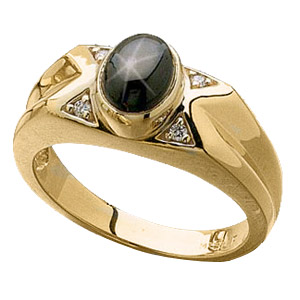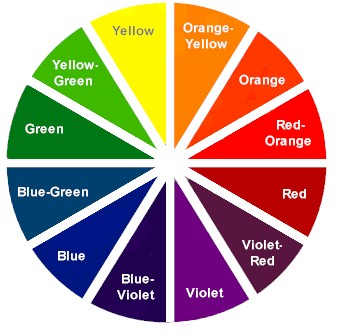The presence of a star is one of the most remarkable phenomena encountered in the world of colored gemstones. This optical occurrence is quite rare, being only found in a very small percentage of the sapphires mined around the world. Top grade star sapphires are very popular with collectors.
When looking to buy a star sapphire, note that the value depends not only on the carat weight of the stone but also the body color and visibility and intensity of the star. The black star sapphire from Thailand is quite unique in having a gold (rather than white) star.
Why Buy Loose Gemstones Instead of Pre-Set Jewelry?
There are many reasons, but basically it comes down to value and choice.
When buying a loose gemstone instead of a pre-set stone, you can be sure you are getting the best value for your money. Loose gemstones are less expensive, a better value, and you can really see what you are paying for. The most important part of getting the right price and finding the best value is to first see what you're getting. A jewelry setting will hide the inclusions inside a gem, and can deepen or brighten its color. With a loose stone you can much more easily inspect the gem and see it for what it really is. In this way you can get a better idea of its true worth and be sure you are paying a fair price.
The second advantage of buying a loose gemstone is choice. You are free to pick the exact color, cut, shape and variety of the stone for the setting of your dreams, be it yellow gold, white gold, platinum or silver; prong set or bezel set. You can experience the joy of creating your very own, one-of-a-kind jewelry design. Choose from a variety of jewelry settings and styles to create a completely original presentation that will perfectly suit your individual gemstone and will be as unique as you are!
 |
 |
| Origin | Thailand |
|---|---|
| Color | Black |
| Refractive Index | 1.759-1.778 |
| Chemical Composition | AL2 O3 |
| Hardness | 9 |
| Density | 4 |
| Crystal Structure | Trigonal |
| Zodiac Sign | Libra |
| Planet | Venus |
| Month | September |
| Anniversary | 5th and 45th |


.jpg)
Color is the single most important factor in determining the value of a sapphire. Indeed, the color of a sapphire is more important than its clarity. Sapphires are rarely clean and even very expensive stones can be slightly included. Subtle differences in color can make great variations in valuations of fine gemstones. Fine loose gemstones of good color and clarity are always rare and valuable. Highly saturated medium or medium dark tones are best, sapphires which are too dark or too light are worth considerably less.
The name sapphire comes from the Greek word "sapphirus", meaning "blue". However, sapphire gemstones come in many colors including pink, yellow, orange, green, black, color-change, purple, violet, light blue, and the rare orange-pink Padparadscha sapphire gems. Padparadscha comes from the Sinahalese word meaning "lotus color". Sapphires other than blue, pink, yellow, green and orange sapphire are usually called "natural fancy-color sapphire". Red hues result from traces of chromium. The greater the concentration of oxides the deeper the color.
The traditional heating of ruby and sapphire is a widely used and is an accepted enhancement process which can improve the transparency and color of the stones. Techniques range from simply throwing gems into a fire to be cooked, to employing sophisticated electric or gas furnaces at specific pressures and atmospheric conditions. The treatment is permanent and heated stones do not require any special care.
Today however, there is a new and important source of gem quality sapphires on the market - Madagascar. Its blue sapphire's are similar in appearance, quality, and material to those from Sri Lanka. Generally they are indistinguishable from Ceylon sapphires and are interchangeable in value.
USA
Rubies can be found in the U.S. in the Cowee Creek District, Macon Co., North Carolina. A few scattered finds were reported in Sparta and Ogdensburg, Sussex Co., New Jersey.
The production of gem-quality sapphires in the United States is not new or recent. In 1865, the first U.S. sapphires were found in the gravels of the Missouri River in Lewis and Clark County, Montana. This was followed by subsequent discoveries on Dry Cottonwood Creek in Deer Lodge County in 1889, on Rock Creek in Granite County in 1892, and in Yogo Gulch in Judith Basin County in 1895. Additionally, small amounts of sapphire are recovered from Quartz Gulch in Granite County, Pole Creek in Madison County, the Missouri River in Chouteau County, and Brown's Gulch in Silver Bow County. Furthermore, corundum crystals, from which star sapphires have been cut, are found in Beaverhead and Madison Counties. Also, in 1895, the first sapphires were produced from the Cowee Valley in Macon County, North Carolina. But until very recently, with the exception of Yogo Gulch material, the commercial gemstone industry has had limited interest in U.S. sapphires.
Mythology
Legend has it that the first person to wear Sapphire was Prometheus, the rival of Zeus, who took the gemstone from Cacaus, where he also stole fire from heaven for man.
Known as the "Gem of Heaven", the ancient Persians believed Sapphires were a chip from the pedestal that supported the earth, and that its reflections gave the sky its colors.
Tradition holds that Moses was given the Ten Commandments on tablets of sapphire, making it the most sacred gemstone. Because blue sapphires represent divine favor, they were the gemstone of choice for kings and high priests. The British Crown Jewels are full of large blue sapphires, the symbol of pure and wise rulers.
The guardians of innocence, Sapphires symbolize truth, sincerity and faithfulness, and are thought to bring peace, joy and wisdom to their owners. In ancient times it was believed that when the wearer of a Sapphire faced challenging obstacles, the gem's power enabled them to find the correct solution.
In India it was believed that a Sapphire immersed in water formed an elixir that could cure the bite of scorpions and snakes. Alternatively, if it were worn as a talisman pendant, it would protect the wearer against evil spirits.
The following legend is Burmese in origin and highlights Sapphires‘ connection with faithfulness: “Eons ago Tsun-Kyan-Kse, a golden haired goddess with Sapphire blue eyes, presided lovingly over the temple of Lao-Tsun. Everyday, the temple‘s chief monk Mun-Ha, meditated before the golden goddess accompanied by his devoted companion, a green-eyed cat named Sinh. One day the temple was besieged by a group of terrible outlaws. When they threw Mun-Ha to the floor, Sinh leapt fiercely at the bandits, jumping up on his master‘s chest to protect him. The wrong doers fled screaming in fear, never to return and in gratitude for his courage, the golden goddess awarded Sinh with her Sapphire blue eyes. To this day, Sinh‘s ancestors guard over the temple.” The temple still stands and is populated by Siamese cat‘s with striking blue eyes (typically this breed has green eyes).
For hundreds of years Blue Sapphires were the popular choice for engagement and wedding rings.

